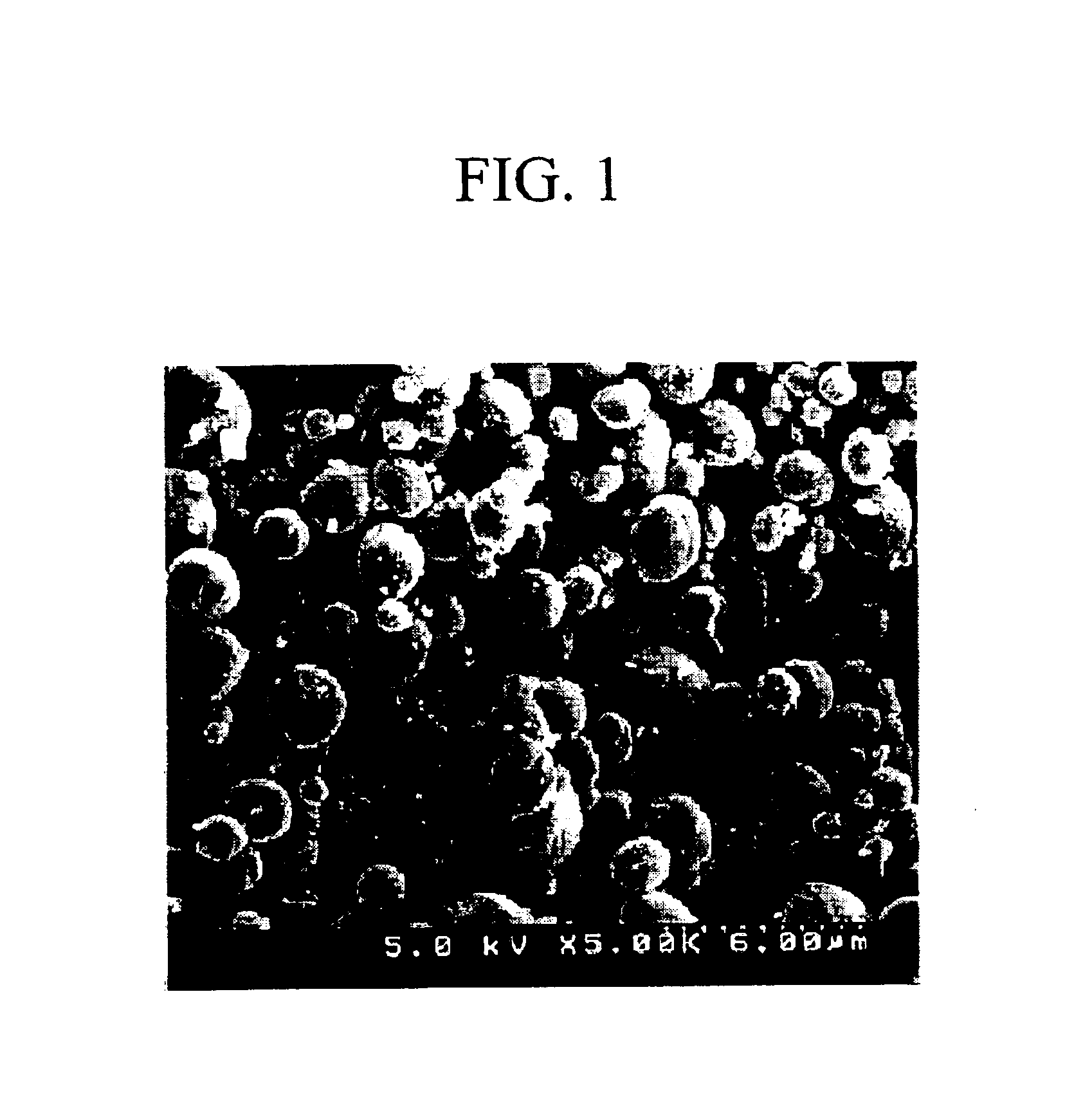Biodegradable polyester polymer and method for preparing the same using compressed gas
a polyester polymer and polyester technology, applied in the field of biodegradable polyester polymer, can solve the problems of uncontrollable, high price and inability to arbitrarily control, and biodegradable polymer, and achieve the effect of reducing the number of raw materials, and improving the quality of the finished produ
- Summary
- Abstract
- Description
- Claims
- Application Information
AI Technical Summary
Benefits of technology
Problems solved by technology
Method used
Image
Examples
example 1
[0055]10 g of L-lactide was added in a high pressure reactor of 60 mL, to which 0.2 g of stannous octoate as a catalyst and 0.1 g of 1,6-hexandiole as an initiator were added. HCFC-22 was injected into the high pressure reactor with being pressurized by a high pressure liquid pump. The temperature and the pressure inside the reactor were set at 100° C. and 270 bar, respectively.
[0056]When the temperature and the pressure were constant, the polymerization reaction was performed for 2 hours. When polymerization was completed, the reaction product was sprayed into a high pressure precipitator where CO2 flowed.
[0057]The obtained polylactide was measured by a Gel Permeation Chromatography (GPC) as that the average molecular weight (Mw) was 300,000 g / mol, the molecular weight distribution (MWD) was 1.9, and 93% of yield was obtained.
[0058]Observation of the obtained polylactide particle by scanning electronic microscope for measuring the average particle diameter and the distribution of t...
example 2
[0059]Except that, after completion of polymerization, the product is sprayed to the air to collect particles, polylactide particles were prepared in the same manner as the example 1. Measurement of the obtained polylactide by the GPC shows that Mw was 290,000 g / mol, MWD was 2.1 and 96% of yield was obtained. Observation of the prepared polylactide particle by scanning electronic microscope for measuring the average particle diameter and the distribution of the particle diameter showed that an average particle diameter was 10 μm, and distribution of particles with a diameter of 100 μm or less was 95%.
example 3
[0060]Except that dimethylether (DME) was used as a reaction solvent, polylactide particles were prepared in the same manner as the example 1. Measurement of the obtained polylactide by the GPC shows that Mw was 260,000 g / mol, MWD was 2.0 and 91% of yield was obtained. The average particle diameter of the polylactide was 0.5 μm, and distribution of particles with a diameter of 5 μm or less was 95%.
PUM
| Property | Measurement | Unit |
|---|---|---|
| Length | aaaaa | aaaaa |
| Fraction | aaaaa | aaaaa |
| Pressure | aaaaa | aaaaa |
Abstract
Description
Claims
Application Information
 Login to View More
Login to View More - R&D
- Intellectual Property
- Life Sciences
- Materials
- Tech Scout
- Unparalleled Data Quality
- Higher Quality Content
- 60% Fewer Hallucinations
Browse by: Latest US Patents, China's latest patents, Technical Efficacy Thesaurus, Application Domain, Technology Topic, Popular Technical Reports.
© 2025 PatSnap. All rights reserved.Legal|Privacy policy|Modern Slavery Act Transparency Statement|Sitemap|About US| Contact US: help@patsnap.com



